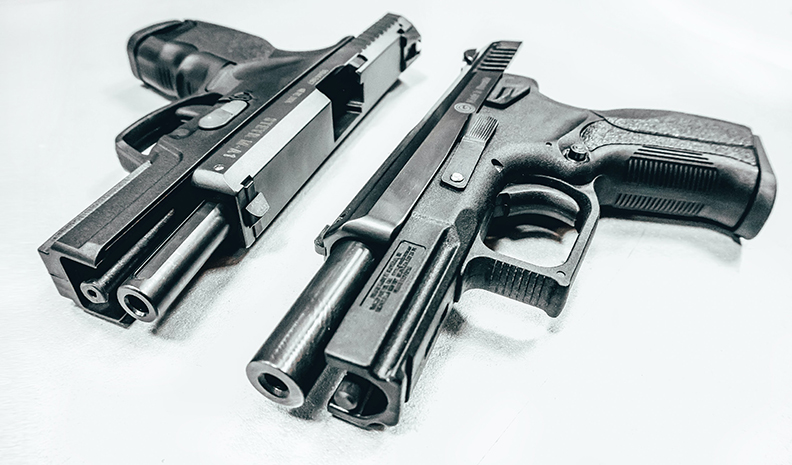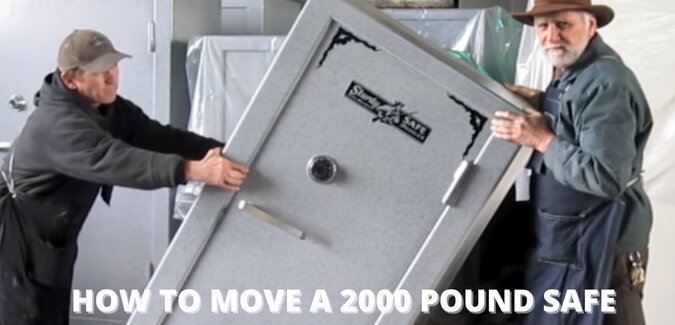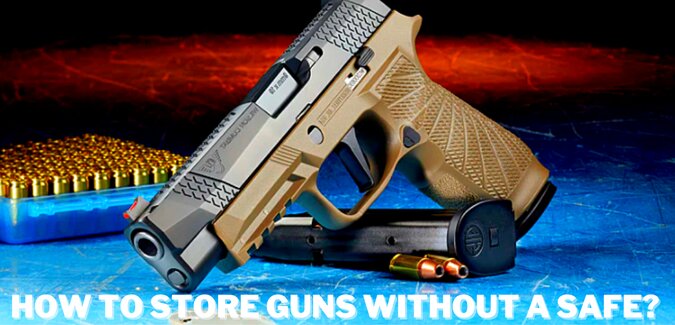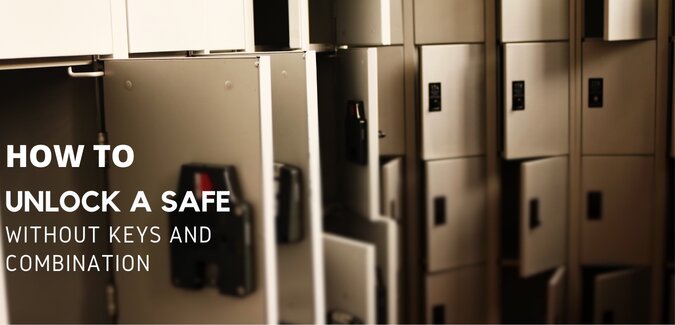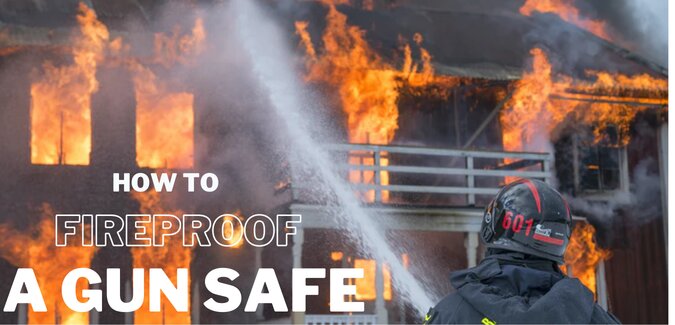Concealed Carry at Home: How to Secure Your Firearm: Expert Tips
To store your firearm safely while carrying it at home, utilize secure lock boxes or safes. Proper storage techniques ensure the safety of both you and your family.
Introduction (120 words): As a responsible gun owner, it is crucial to prioritize the safe storage of firearms, especially when carrying them at home. Improper storage can lead to accidents and potentially dangerous situations. Therefore, understanding the best practices for safely storing your firearm is paramount.
Utilizing secure lock boxes or safes is vital to prevent unauthorized access and keep your gun out of the hands of children or individuals who may use it irresponsibly. Additionally, proper firearm storage not only reduces the risk of accidents but also helps protect your weapon from theft or damage. We will explore various techniques and methods for storing your firearm safely while carrying it at home. By implementing these guidelines, you can ensure the well-being of yourself, your loved ones, and those around you.
The Importance Of Home Firearm Security
When it comes to owning a firearm at home, ensuring proper security is of utmost importance. Storing your firearm safely not only protects your loved ones from accidents but also helps prevent unauthorized access and potential misuse. In this blog post, we will discuss the risks of unsecured firearms and the legal and ethical responsibility that comes with owning a firearm at home.
The Risks Of Unsecured Firearms
Leaving a firearm unsecured poses significant risks. Kids are naturally curious, and the presence of an unsecured firearm can lead to tragic accidents. In a split second, a child can find and mishandle a loaded firearm, resulting in severe injuries or even fatalities. Additionally, unsecured firearms are more susceptible to theft. Burglars targeting homes often seek firearms as they can be sold illegally or used in subsequent crimes. Avoiding these risks is vital for the safety of your family and your community.
Storing your firearm safely not only protects your loved ones from accidents but also helps prevent unauthorized access and potential misuse.
Legal And Ethical Responsibility
In addition to the safety concerns, as a firearm owner, you have legal and ethical responsibilities. By law, you are required to keep your firearm inaccessible to unauthorized individuals. Failure to do so can lead to legal implications, including criminal charges if the firearm is used in a crime. Taking proper security measures ensures that you fulfill your legal obligations as a responsible gun owner.
Moreover, exercising ethical responsibility means acknowledging the potential consequences of unsecured firearms. By safely storing your firearm, you contribute to the collective effort of reducing gun-related accidents and crimes. Being aware of the immense impact of your responsible gun ownership is crucial for the well-being of your community.
To summarize, proper home firearm security is paramount in ensuring the safety of your loved ones and preventing unauthorized access. By understanding the risks of unsecured firearms and acknowledging your legal and ethical responsibilities as a gun owner, you can take the necessary steps to store your firearm safely and contribute to a safer society.
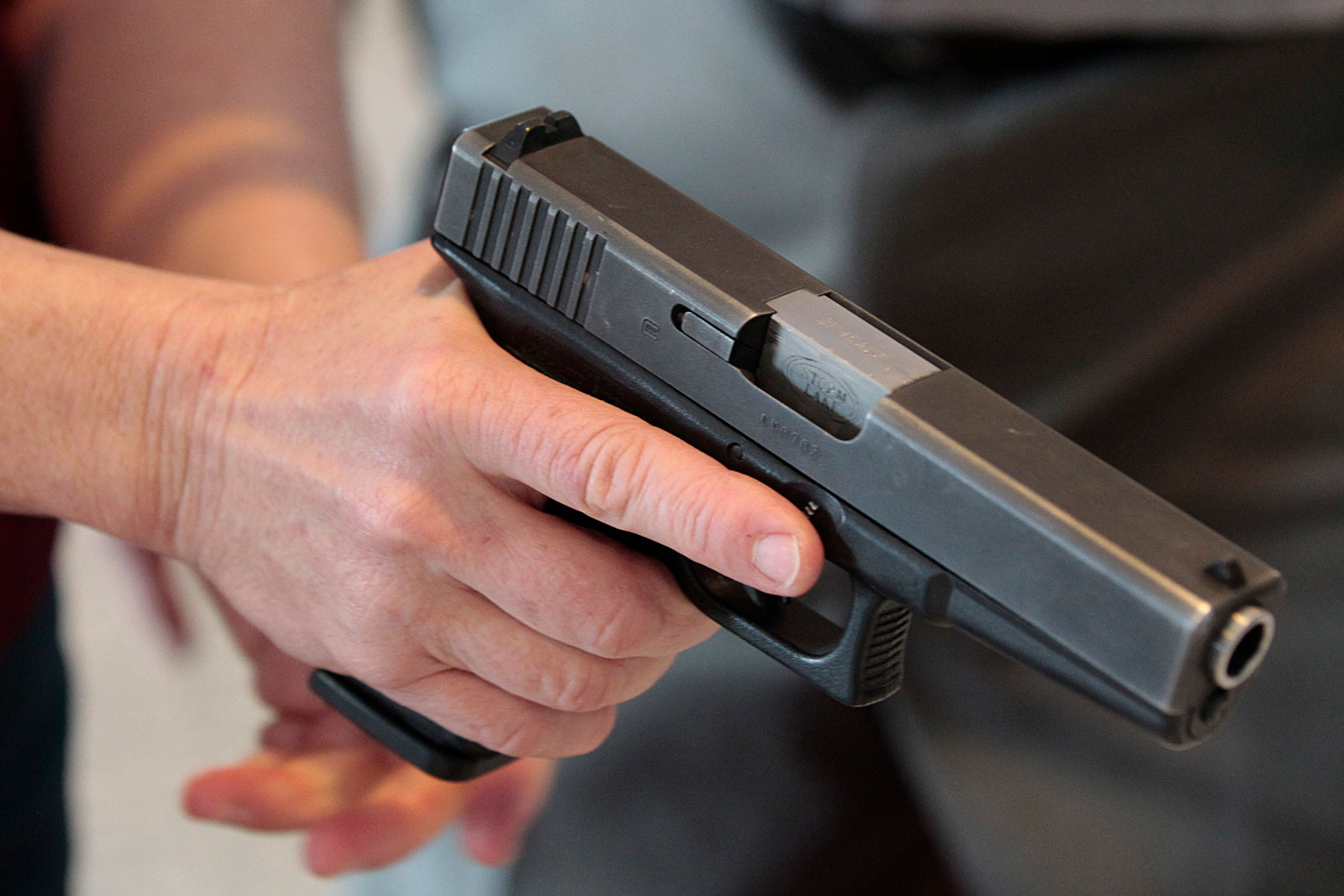
Credit: www.americanprogress.org
Choosing The Right Safe Or Locking Device
Safely storing a firearm at home is crucial for concealed carry. Choose a secure locking device to ensure safety and accessibility. Consider options like biometric safes or quick-access lockboxes for effective and safe storage of your firearm.
When it comes to owning a firearm, responsible gun ownership means ensuring its safety at all times. This is especially important when it comes to storing your firearm at home. Choosing the right safe or locking device is crucial in keeping your firearm secure and out of reach from unauthorized access. Let’s explore the different types of safes and locking devices available, as well as the factors you should consider when making your selection.
Types Of Safes And Locking Devices
There are various types of safes and locking devices available on the market today. Here are a few popular options:
- Biometric safes: These safes use your unique fingerprints or other biometric information to grant access. They offer quick and convenient entry while ensuring that only authorized individuals can open the safe.
- Electronic keypad safes: These safes require a numeric code to unlock. They often allow for multiple user codes and provide reliable security.
- Key locks: Classic and simple, key lock safes require a physical key to open. While they may not offer the same convenience as biometric or electronic safes, key locks can still provide effective security.
- Trigger locks: These devices attach directly to your firearm, preventing the trigger from being pulled. While not a safe in themselves, trigger locks add an extra layer of safety when storing your firearm.
- Cable locks: Similar to trigger locks, cable locks secure your firearm by preventing its use. They loop through the gun’s action or chamber, rendering it inoperable.
Factors To Consider When Choosing
When selecting a safe or locking device for your firearm, it’s important to consider a few key factors:
- Security level: Ensuring that the safe or locking device you choose provides a high level of security is paramount. Look for safes that are made from solid materials, have sturdy locks, and offer tamper-resistant features.
- Size and capacity: Consider the size of your firearm collection and choose a safe or locking device that can accommodate your needs. Having extra space for accessories and ammunition is also beneficial.
- Ease of access: While security is crucial, you’ll also want to select a safe or locking device that allows for quick and easy access to your firearm when needed. Biometric or keypad safes often provide the most convenient options in this regard.
- Installation: Some safes require professional installation, while others are more DIY-friendly. Consider your comfort level with installation and choose accordingly.
By thoroughly considering these factors and familiarizing yourself with the various types of safes and locking devices available, you can make an informed decision that suits your needs and promotes responsible firearm storage.
Strategies For Safe Firearm Storage
When it comes to storing firearms safely at home, it’s crucial to have a well-thought-out strategy in place. Implementing secure storage solutions not only ensures the safety of your family but also provides peace of mind. Here are some effective strategies for safe firearm storage:
Access And Placement
When storing a firearm at home, access control and proper placement are essential. Consider using quick-access lockboxes or safes that can be easily accessed by you in case of an emergency, while also keeping the firearm out of reach of children and unauthorized individuals. Place the locked storage unit in a location that is both secure and well-concealed, such as within a closet or behind a piece of furniture, ensuring that it is not easily visible or accessible to potential intruders.
Additional Security Measures
In addition to using lockboxes or safes, there are several additional security measures that can be employed to further enhance firearm storage safety. Utilize trigger locks or cable locks to render the firearm inoperable when not in use. Installing security cameras or alarms in the vicinity of the storage area can provide an added layer of protection against unauthorized access. Consider reinforcing the entry points to your home and the area where the firearm is stored to deter burglars and intruders.
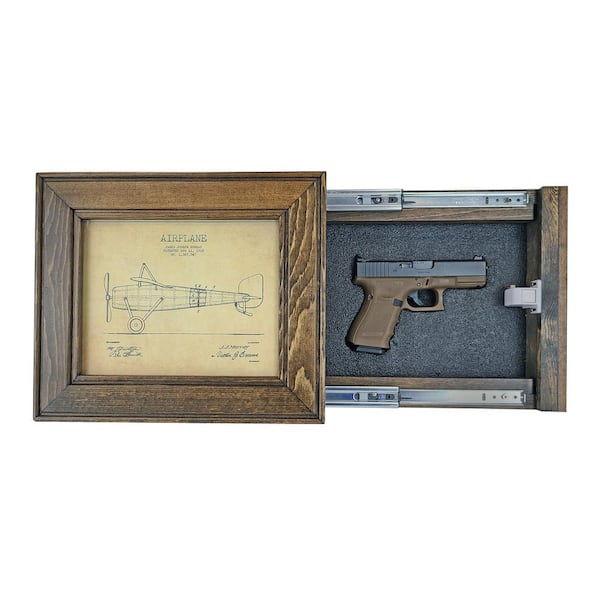
Credit: www.homedepot.com
Educating Family Members And Children
When it comes to concealed carry at home, ensuring the safety of your family members, especially children, is of utmost importance. Educating your family members and children about firearm safety is crucial to avoid accidents and promote a secure environment. By implementing effective communication and awareness strategies, as well as providing appropriate training and drills, you can ensure that everyone in your household understands the importance of firearm safety.
Communication And Awareness
Open and ongoing communication is the key to creating an environment where everyone is aware of the presence of firearms in the home. Start by having a conversation with your family members, explaining the reasons behind your decision to own a firearm for personal protection. Emphasize the importance of gun safety and the potential risks associated with mishandling firearms.
- Explain the concept of a firearm’s lethality and the irreversible consequences it can have.
- Encourage an open dialogue where everyone can ask questions and voice their concerns.
- Discuss the importance of responsible behavior and the necessity of keeping firearms secure at all times.
- Make sure everyone understands the difference between toy guns and real firearms.
Training And Drills
Providing proper training on firearm safety and conducting regular drills within your household can significantly reduce the likelihood of accidents. Implement the following training and drill practices:
- Establish clear guidelines for handling firearms and outline the consequences of failing to adhere to these rules.
- Teach family members, including children, how to safely handle and unload firearms under direct supervision.
- Practice safe storage and retrieval techniques, ensuring everyone knows how to safely access firearms when needed.
- Conduct role-playing scenarios to simulate potential real-life situations and reinforce the importance of responsible firearm use.
- Regularly review and reinforce the training practices to ensure they become ingrained in your family’s routine.
Educating family members, especially children, about concealed carry and firearm safety is paramount for a secured living environment. By facilitating open communication and awareness, alongside effective training and drills, you can ensure that everyone in your household understands the necessary precautions and responsibilities associated with firearm ownership.
Emergency Situations And Quick Access
Safely store your firearm at home to ensure quick access during emergency situations. Properly secure your concealed carry weapon to protect your loved ones and yourself.
Quick-access Safes And Devices
In emergency situations at home, quick access to your firearm may be crucial for your safety and the safety of your loved ones. This is where quick-access safes and devices play a pivotal role. These safes are designed to securely store your firearm while allowing for rapid retrieval when needed. Investing in a quick-access safe or device can provide peace of mind knowing that your firearm is always within reach while ensuring it remains inaccessible to unauthorized individuals – especially children. Here are some effective options for quick-access safes and devices:- Biometric Safes: These safes utilize cutting-edge fingerprint technology, allowing only authorized individuals to access the firearm within seconds. By simply scanning your fingerprint, the safe’s lock mechanism quickly grants access, providing swift readiness in emergency situations.
- Electronic Keypad Safes: Equipped with a user-programmable keypad, these safes require a personalized code for access. With the ability to store multiple combinations, electronic keypad safes offer quick entry to your firearm while maintaining a high level of security.
- Radio Frequency Identification (RFID) Safes: Using small key fobs or RFID-enabled devices, these safes provide quick and easy access to your firearm. By simply waving the programmed device over the safe, the locking mechanism disengages, granting swift retrieval.
Creating A Home Defense Plan
While ensuring quick access to your firearm is essential, it is equally important to have a well-thought-out home defense plan to maximize your safety. Here are some key points to consider when creating your home defense plan:- Familiarize Yourself with the Layout: Take the time to thoroughly understand the layout of your home, including potential escape routes and secure areas. This knowledge will be invaluable during emergency situations.
- Designate Safe Areas: Identify specific secure areas within your home where family members can seek refuge in the event of an intruder. These areas should have reinforced doors, locks, and communication devices.
- Establish Clear Communication: Communication is crucial during emergencies. Ensure that all family members understand the importance of discreetly notifying others if they encounter a potential threat.
- Practice Drills: Regularly conduct home defense drills with your family to reinforce the plan. By practicing different scenarios, everyone will become familiar with their roles and responsibilities, increasing overall preparedness.
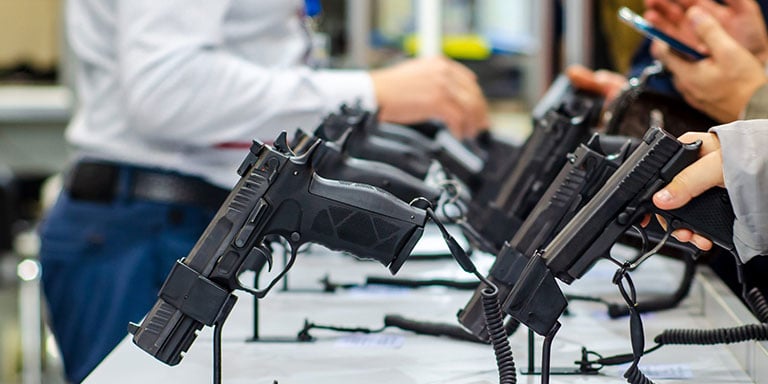
Credit: tacticalgear.com
Frequently Asked Questions For Concealed Carry At Home: How To Store Your Firearm Safely
How Can I Safely Store My Firearm At Home?
To safely store your firearm at home, consider using a secure gun safe or lockbox. Ensure it is out of reach of children and properly mounted or secured to prevent theft or unauthorized access.
What Are The Best Practices For Storing Firearms At Home?
The best practices for storing firearms at home include using a secure storage solution, keeping them unloaded and locked, storing ammunition separately, and regularly inspecting and maintaining the storage equipment.
Where Should I Place My Firearm For Easy Access At Home?
Place your firearm in a quick-access safe or lockbox that is securely mounted in a convenient location. Ensure it is easily accessible to you but out of reach of unauthorized individuals, such as children or visitors.
Conclusion
Securing your firearm is a critical aspect of responsible gun ownership. By implementing the proper storage measures and considering factors such as accessibility and safety, you can effectively protect yourself and loved ones. Choosing a reliable and secure storage option allows for peace of mind while ensuring the safety of your household.

